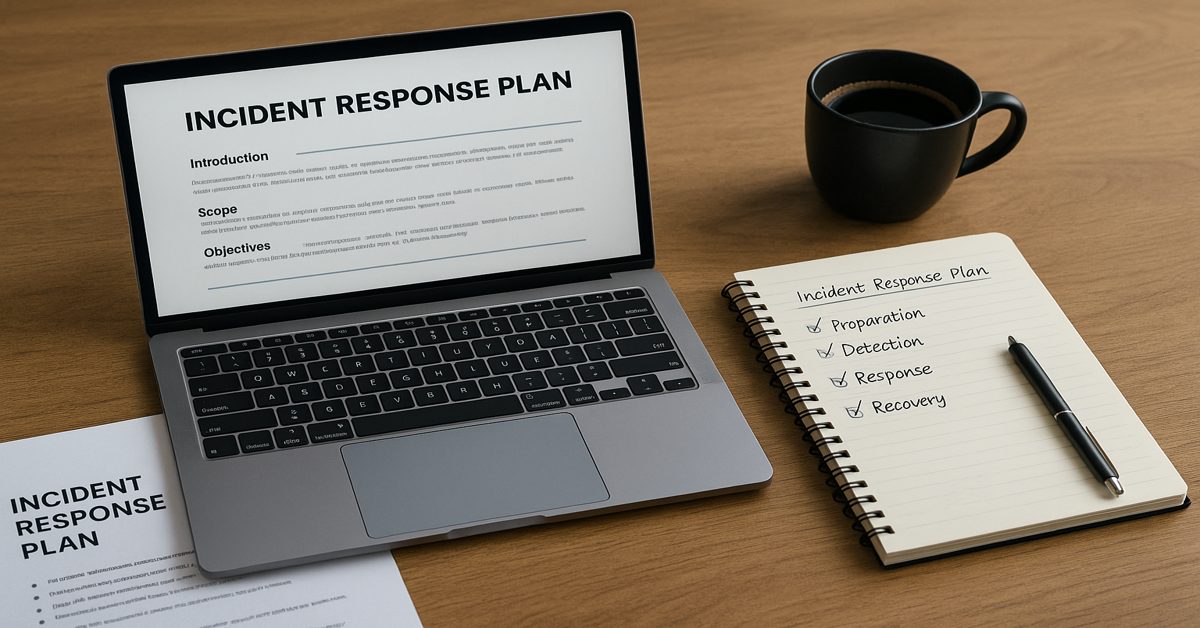Why Small Businesses Need Practical Risk Response Strategies
Cybersecurity is no longer optional for small businesses. Every company, no matter the size, faces potential cyber threats that can disrupt operations, expose sensitive data, and damage customer trust. The challenge, however, is that most small businesses don’t have endless budgets for complex IT defenses.
That’s where risk response strategies come in. By focusing on prioritizing risks and responding effectively through a solid cybersecurity risk response and security risk response plan, business leaders can take control without overspending. At Gallop Technology Group, we help small law firms, office managers, and business owners strengthen security while staying budget-conscious. Our free domain security check-up and cybersecurity services give companies peace of mind by addressing threats before they turn into costly breaches.
This article breaks down five smart strategies you can implement to manage and respond to cybersecurity risk effectively—even with limited resources.
Risk Response Strategies That Actually Work
When you think about protecting your business, the sheer number of threats can feel overwhelming. Hackers, phishing emails, ransomware, insider risks, weak passwords—the list goes on. The good news is you don’t have to tackle everything at once. By applying proven risk management response strategies, you can focus on what matters most and act with confidence.
Here are five practical steps based on proven frameworks and simplified for small businesses.
Identify and Evaluate Risks
The first step in any security program is knowing what risks exist. You cannot respond to what you don’t understand. Many small businesses assume that because they aren’t large corporations, hackers won’t bother with them. Unfortunately, that’s far from true. Cybercriminals often target smaller companies because they believe defenses will be weaker.
To evaluate risks, start by listing the types of cyber threats your business might face:
- Unauthorized access to sensitive data.
- Ransomware or malware infections.
- Email-based phishing scams.
- Insider risks from employees or contractors.
- Weak system configurations or outdated software.
Once listed, you can analyze each risk by considering its likelihood (how probable it is to happen) and its impact (how damaging it would be if it occurred). This simple but effective method, often called the probability-impact matrix, helps you quickly see which threats require urgent attention.
For example, a business with no backup system in place faces high impact from ransomware. The likelihood of ransomware is also significant, making this a top-tier risk to address quickly. On the other hand, a very low chance event with minimal impact, such as an outdated piece of software that is never connected to the internet, may be less urgent.
This process doesn’t require expensive tools. A simple spreadsheet can be enough to list risks, rate them, and help your business focus its limited security resources wisely.
Prioritize High-Impact Threats
Not all risks are equal. Some may be minor inconveniences, while others could shut down your business entirely. That’s why prioritization is critical.
When you use the probability-impact method, focus first on the risks that are both highly likely and highly damaging. For example:
- Phishing emails targeting staff are extremely common, and if successful, could expose sensitive client or financial data.
- Outdated operating systems create a large entry point for attackers, especially if those systems are connected to the network.
- Weak or reused passwords create vulnerabilities that cybercriminals exploit daily.
By identifying these top-tier threats, you can allocate your limited time and resources where they matter most. This ensures that your investments—whether in training, technology, or outside support—produce the greatest results in reducing overall cybersecurity risk.
This step simplifies what might otherwise feel like an endless list of security concerns. Instead of trying to fix everything at once, you work on the risks that truly threaten your bottom line.
Apply Practical Mitigation Tactics
Once risks are prioritized, the next step is mitigation. In cybersecurity, mitigation means reducing the potential damage of a threat or lowering its likelihood. Here are four core tactics small businesses can use:
- Avoid the risk – For example, don’t store sensitive data you don’t need. Less data equals fewer opportunities for hackers. A law firm that doesn’t keep unnecessary client financial details reduces exposure immediately.
- Transfer the risk – This could involve purchasing cyber insurance to offset financial losses in case of a breach. While insurance doesn’t prevent an incident, it helps your company recover financially.
- Reduce the risk – Strengthen access controls, enforce multi-factor authentication, and train staff on spotting phishing attempts. These steps make it harder for attackers to succeed.
- Accept the risk – Sometimes, the cost of addressing a threat is greater than the potential damage. In these cases, businesses may choose to monitor but not act aggressively, especially for low-likelihood events.
For example, a small business might accept the risk of an old printer being compromised but must actively reduce the risk of employees falling for phishing attempts. Practical decisions like this allow you to make the best use of limited cybersecurity budgets.
Monitor Continuously
Cybersecurity isn’t “set and forget.” Too many businesses install antivirus software and assume they’re protected forever. But hackers constantly evolve their tactics, meaning yesterday’s defenses might not work tomorrow.
That’s why continuous monitoring is essential. Regularly check system logs, track network activity, and review employee access levels. Even if you can’t afford a 24/7 in-house IT team, managed services and monitoring tools can give you coverage at a fraction of the cost.
Continuous monitoring also includes regular security assessments. Think of it like routine check-ups at the doctor. Just as health conditions can develop silently, security issues can exist in your network for months before being noticed. By testing and reviewing consistently, you increase your chances of catching issues early.
Monitoring also extends to staff behavior. For example, if an employee suddenly downloads unusually large amounts of client data or accesses systems at odd hours, that’s a red flag that should be investigated. Insider threats, whether intentional or accidental, can cause as much harm as outside attackers.
Respond and Adapt Quickly
Even with the best risk management response strategies, no defense is 100% perfect. The difference between a minor incident and a business-ending crisis often comes down to how fast and effectively you respond.
Develop a simple incident response plan that outlines:
- Who should be notified if a breach occurs.
- What immediate steps should be taken to contain the issue.
- How to communicate with staff, clients, and partners.
- How systems will be restored after an incident.
For example, if a ransomware attack locks down files, knowing in advance whether you’ll restore from backups or engage an outside IT partner saves precious time. Without preparation, businesses may spend days—or even weeks—scrambling, leading to costly downtime.
The goal is not perfection—it’s preparation. By practicing response scenarios and adapting your plan over time, your business stays resilient even when faced with unexpected cyber threats.

Bringing It All Together
Cybersecurity doesn’t need to be overwhelming or expensive. By focusing on five smart risk response strategies—identifying, prioritizing, mitigating, monitoring, and responding—you can stay one step ahead of cyber threats without draining your budget. Strengthening your cybersecurity risk response and maintaining a proactive security risk response plan can make all the difference in protecting your business long-term.
Gallop Technology Group helps small businesses, law firms, and office managers strengthen their defenses through expert guidance and affordable IT solutions. Our free domain security check-up identifies vulnerabilities before hackers can exploit them, while our cybersecurity services ensure you’re protected with strategies that actually work. Contact us today at 480-614-4227 to schedule your free domain security check-up and discover how our cybersecurity services can safeguard your business.
Source:







